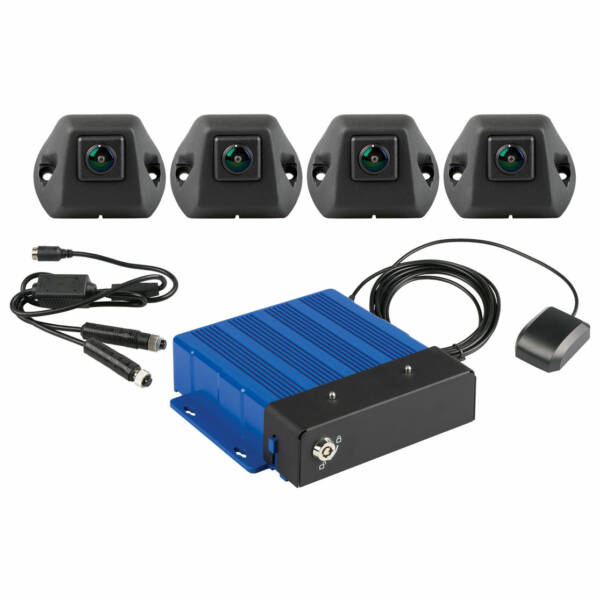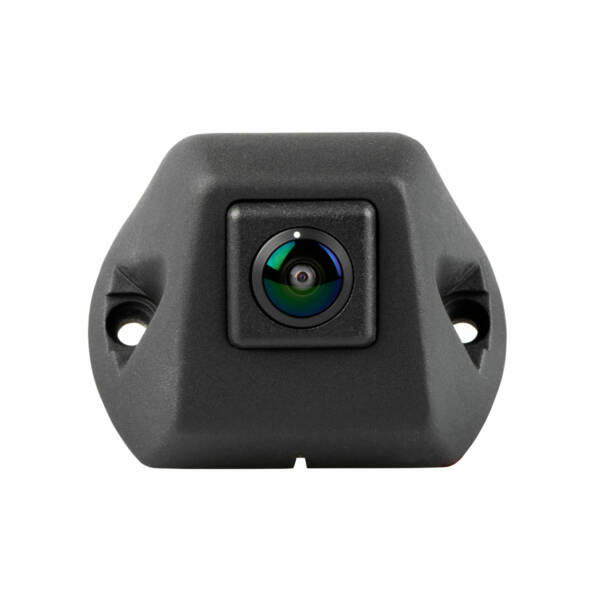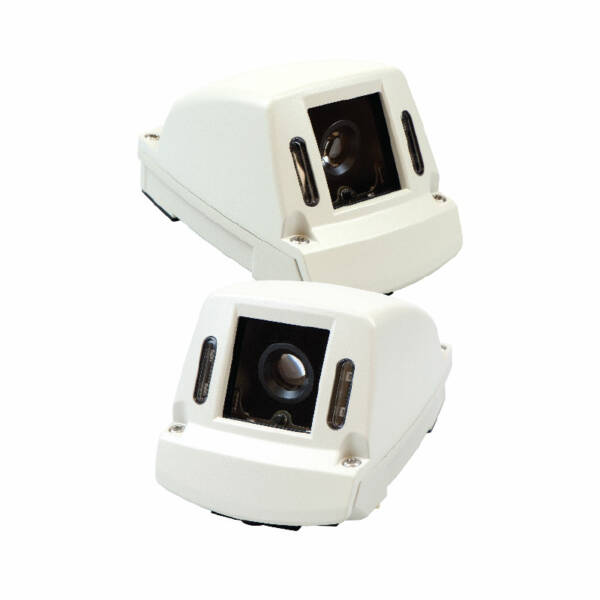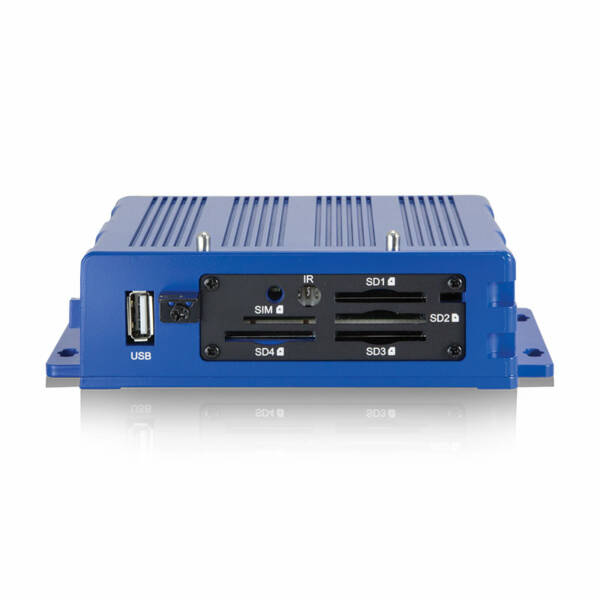Respond with Confidence
Video systems assist emergency vehicle operators by providing vision into blind spots on apparatus, making the emergency response safer and more efficient. Advanced systems include overlays that project where devices like outriggers and dump chutes will be when deployed, assisting the driver with placement of the vehicle on scene. Despite having trained operators and advanced equipment, accidents can happen. Recording devices on these systems document incidents to protect the facts and help our services improve.
inView 360[sm mark=”tm”] HD
NFPA 1900 requires a rear-view visibility system on all fire apparatus and ambulances. There are several options to meet this requirement including wired and wireless, and systems can be expanded to provide additional views.

Wired Systems
Wired systems are the least expensive and still provide the most reliable connection. When building a new apparatus wired system are used the most due to the available access for routing wires during production.
Competitor Comparisons:
Roscoe, ASA Voyager, Federal Signal

Wireless Systems
Wireless technology has advanced and become very reliable. Wireless systems make installation easier as they only require power at the monitor and
Competitor Comparisons:
Roscoe, ASA Voyager, Federal Signal

Single Rear View Camrea
A simple single camera backup system meets the NFPA code and provides the operator with a clear view of the rear of the apparatus. Most systems are available with built-in audio to hear commands from the personnel directing the backing operation.
Competitor Comparisons:
Roscoe, ASA Voyager, Federal Signal

Dual Camera Systems
A dual camera system adds functionality by providing a second view, typically of the officer side of the apparatus. This gives visibility to area’s that are often not visible from the apparatus mirrors. The side camera can be triggered to go full screen when the turn signal is activated.
Competitor Comparisons:
Roscoe, ASA Voyager, Federal Signal

Triple Camera Systems
A three camera system provides visibility of the rear and both sides, exposing all potential blind spots. Triggers are built in to active the appropriate camera with reverse gear and each respective turn signal.
Competitor Comparisons:
Roscoe, ASA Voyager, Federal Signal

Quad Camera Systems
Quad camera systems are often confused with birds-eye view systems. A quad camera system provides four individual images including rear, sides, and front. Often the front area by the bumper is obstructed down low and a camera can help in this area. Another application for the front camera is on rear mount platform aerials. These devices often block the drivers upper vision with the platform, obstructing items like traffic lights.
Competitor Comparisons:
Roscoe, ASA Voyager, Federal Signal

Birds-Eye 360 Video Systems
Birds-eye video systems have advanced the safety on not only emergency vehicles but also in passenger cars. This technology takes four to six individual cameras mounted around the perimeter of the apparatus and “stitches” the images together into one birds-eye view. The image gives the view that a drone would provide hovering over top of the apparatus. The birds-eye view gives visibility 360° around the apparatus. These systems are also equipped with triggers, which switch the view to a focused image on the desired area with activation of reverse gear, or turn signal.
Competitor Comparisons:
Brigade

Recording Devices
Many systems come equipped with a recording device, and for those systems without, an external recording device can be added. Recording devices provide several benefits including asset protection, evidence documentation, and training. Response videos can be played back for the department to evaluate routes driven, intersection management, and apparatus placement on the fire scene. Typical storage is on removable SD cards providing storage options of several megabytes or up to a terabyte. Many recording devices feature the ability to protect the files so they can only be viewed by the department who owns the system.
Competitor Comparisons:
